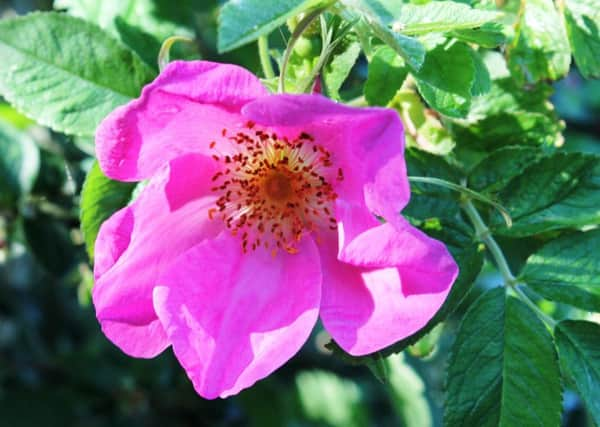Gardening: Nature’s high climber


Nature knows best. We mere mortals merely try to emulate Her, borrow from Her, steal from Her, pretend that Her ideas were ours originally.
Just look at that most English of English picture-perfect gardens – the country cottage with honeysuckle and roses clambering around the door and along the eves. Photographers have been making a meal of it for decades, but who can blame them? It’s a pretty picture, perfect for biscuit tins and chocolate boxes.
Advertisement
Hide AdAdvertisement
Hide AdYet it was Nature who came up with the original – wild roses and wild honeysuckle perfuming the hedgerows of England. She patented the idea and, thankfully, it’s still growing strong outside man- (and woman-) made gardens.
The dog rose is one of those essential parts of summer, although it’s not around very long to enjoy the sunshine. It normally has one mad burst of lightly-scented, usually pink flowers, although some blooms can be white. Established plants can produce hundreds of flowers within a few weeks – then they fade and die before shrubs are weighed down by masses of vividly-coloured hips.
The stems of Rosa canina may be armoured with numerous thorns but they prove no barrier to birds which value those hips as a vital part of their autumn diet.
Those prickles, however, are another reason why gardeners choose to grow the dog rose, usually as informal hedging – the prickles act as a barrier to deter unwanted visitors, both human and animal.
Advertisement
Hide AdAdvertisement
Hide AdThe dog rose is a wild rose native to Britain where it has taken root in hedgerows throughout the country. It grows best in full sun and in moderately fertile, humus-rich, moist but well-drained soil.
Anyone wanting to grow it needs to provide it with just those conditions and it will thrive – sometimes too much, so shears and heavy gloves are also necessities for the tidy-minded gardener, although, if possible, the dog rose should be left unpruned, as it is in the wild.
If pruning is deemed necessary, it should be carried out in late summer or slightly later; give the birds the chance to eat a few of those nutritious hips.
And for the best flowering, apply a balanced fertiliser and mulch in late winter or early spring.
This species rose used to be grown by commercial breeders to provide the rootstock of ornamental roses.